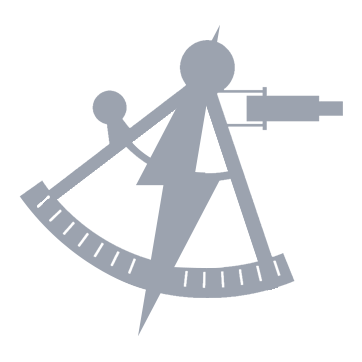Fleet Captain’s Log, Stardate 2401.3
Following our successful defense of Farpoint Station during the Battle of Deneb, we have resumed our search for the Farpoint Cnidarians. Fourth Fleet Intelligence is convinced that the thought-maker technology taken by the Dominion remains a threat, as it was not accounted for when the Lost Fleet left our space. The most logical course of action to locate the Dominion is to locate their quarry, though that is no small task. We have set a course for the general area where we believe the Cnidarian we encountered was headed, but without understanding this species’ life cycle or motivations, it could take months to find it. I have ordered interdisciplinary teams to study every aspect of all of the available data on the Farpoint Cnidarians.
While incredibly understanding for truly understanding cultures, linguistic anthropology did not often get a lot of attention or resources on a starship. Lieutenant Tristan Hawthorne was occasionally called in to help make sure the universal translator was functioning correctly during tricky first-contact missions, but his real work was analyzing what alien languages revealed about their cultures. Whether a culture had one word for snow or twenty was a good indication of what type of climate it originated in, for instance. For that, all he really needed was database access and his trusty PADD, so it was a comparative treat to be using one of the cetacean ops collaboration labs for his latest project. Lieutenant Eirell was watching from the massive tank, her large body resembling that of a whale’s.
Hawthorne was studying a projection of one of the creatures handing over the central display table, looking very much like an aquatic jellyfish (hence the name), though substantially more massive than any such creature. They had no actual evidence that there was any evolutionary connection there, but he’d brought cetacean ops into the project to get more than just a humanoid perspective into his analysis. The rest of his team consisted of Lieutenants Junior Grade Matthew Belvedere, from communication, Lewis Gardner, from nursing, and Corvol Taom, from xenobiology, which provided diversity in discipline but not in experience.
“The reports of the Enterprise describe empathic and telepathic communication. It is possible that any telepaths aboard Arcturus will be able to communicate with these creatures,” Lieutenant Eirell said in her slow, synthetic voice broadcast through the transparent aluminum wall of the tank through the computer.
“Correct, but communication is not the issue. If we understand how they communicate, we might be able to figure out where they are headed,” Hawthorne explained for what felt like the nineteenth time. “Language follows habitat.”
The projection in front of them changed from a pale purple to blue. It was an incredibly subtle color change for Hawthorne’s human eyes, but his earlier analysis had suggested that it would look like a rainbow to someone with more sensitivity to the ultraviolet end of the visual spectrum.
“In every culture that I am aware of, verbal, visual, tactile, or manual communications strategies developed before telepathy. Even if these light patterns are now vestigial, I would bet that they evolved to communicate well in the cnidarians’ natural habitat,” Hawthorne continued.
“Well, from a technical perspective, UV radiation is more energetic than other forms of light and is better able to penetrate fluid media,” Lieutenant Belvedere offered from his seat across the table. “You wouldn’t need to go out of the visual spectrum to communicate in open space.”
“Open space isn’t very hospitable as a place to raise your young, either,” Lieutenant Toam, their xenobiologist, pointed out. “They must come from somewhere with massive amounts of energy to reproduce.”
“Or matter—we don’t know what they ‘eat,’” Nurse Gardner pointed out.
Hawthorne raised an eyebrow; in the few hours they’d been working together, Gardner hadn’t offered any contributions that weren’t borderline sexual harassment to other members of the group. He turned off to the side to think about that and caught the reflection of the projection on the tank wall; its colors looked off from the projection itself.
“We’re looking at this simulation from the Enterprise’s perspective, but they clearly weren’t born in orbit of Deneb IV. What if we overlayed different environmental conditions until we found the environment that yielded the most information from this form of communication?” Hawthorne suggested. “Ambassador Spock did something similar when he realized the origin of the Cetacean Probe in the 2280s.”
“Without a linguistic frame of reference, how can you determine what constitutes information and what constitutes static?” Eirell asked through the tank.
“The universal translator has visual communications algorithms. It should be able to help narrow that down,” Belvedere supplied. “I think it’s a good idea, Tristan,” the communications officer said with a smile.
Hawthorne gave him a small smile in return, before getting flustered and looking down at his notes. He didn’t do well with praise.
“Computer, prepare simultaneous simulations of interstellar phenomena, planetary atmospheres, and stellar formations as lenses through which we can view the original scans of the cnidarians,” Hawthorne ordered. “Filter out any results where visual communication within the UV spectrum would be impossible.”
“Working,” the computer reported.
The computer began projecting dozens of boxes on the tank wall so that both the aquatic and non-aquatic scientists could see what was being done. It labeled them by environment type, ranging from asteroid fields to nebulae to gas giant atmospheres. Each box contained a view of the simulation they had been running, though with its colors in various degrees of difference from the original. The boxes got smaller and smaller as the computer pulled in more data, representing the sheer range of environments one could find in the galaxy.
“Filters ready,” the computer said. “Eleven hundred possible environmental conditions support UV-based visual communication.”
“That’s… a lot of locations,” Gardner noted with a whistle.
“We should narrow the search to locations where UV communication isn’t just possible, but necessary,” Belvedere suggested. “Since it requires more energy to conduct, it’s likely that this species evolved in an area where there was significant background energy that they needed to cut through.”
“I concur. You don’t scream when a whisper will do,” Eirell noted.
“Computer, narrow the search parameters to environmental conditions where the UV spectrum would be the optimal form of visual communication,” Hawthorne clarified.
“Two-hundred twenty-three results,” the computer reported.
“Aggregate those results into general classifications,” Hawthorne ordered.
“Six results,” the computer reported, pulling all of the possible scenarios into six types of nebulae.
“Now we’re getting somewhere,” Hawthorne said with a sigh. “Alright, let’s work on building a test scenario for the computer to extrapolate the linguistic potential here.”
With their filters ready, Hawthorne and his team took another hour to pull together the data from all of the scans on record of the Farpoint Cnidarians to develop a robust simulation. If the creatures used color to make meaning, they’d brought together everything they could possibly find that might be their vocabulary. Once it was ready, Hawthorne projected all six filters next to one another, overlaid with their best guess of the perception of the cnidarians themselves.
Five of the scenarios played out more or less the same way, but the sixth was wonderous: in the conditions of a stellar nebula, the cnidarian pulsed and sparkled with a myriad of colors in patterns that were imperceptible without the UV filter.
“I really want it to be that one,” Gardner said, pointing to the display of light.
“Well, the universal translator says that there’s at least 50 percent more linguistic information in that environment than in deep space. Twenty percent more than in the other scenarios,” Belvedere reported, looking up from his PADD. “It seems like a good place to start.”
“Computer, how many stellar nurseries are within one-hundred light-years of this vessel?”
“Sixteen,” the computer reported.
“And how many are within 45 degrees of our present course.”
“Six.”
Now that was promising.
“Hawthorne to Armstrong.”
“Go ahead, Lieutenant.”
“My team believes that the Farpoint Cnidarians evolved in stellar nurseries. There are six of them in our path,” Hawthorne reported.
“Excellent work. The xenobiology team suspects that the creatures feed on energetic hydrogen from stellar nurseries and brown dwarfs—when they can’t get their tentacles on a warp core, like with the Rubidoux,” Commander Armstrong replied. “I’ll brief the captain. Keep studying that data in the meantime.”
The thing with linguistic anthropology was that there was very rarely a single correct, unambiguous answer. It was difficult to prove causality in any social science, in particular, since this study intersected with evolutionary biology. But hearing that there was another scientific perspective that pointed to stellar nurseries had Hawthorne’s entire team in good spirits. As they were digging into more of the data, the computer chirped.
“Lieutenants Hawthorne, Belvedere, Taom, and Gardner, report to the deck eight pilots’ briefing room for away duty,” the computer ordered.
The pilots’ briefing room on deck eight of Arcturus was packed with officers pulled straight from the middle of the ship’s chain of command—twenty-four assistant and deputy department heads in the lieutenant grades that Tristan Hawthorne recognized from various staff meetings and team-building exercises. Lieutenant Hawthorne was sitting amidst his team in the front row of the theater-style seats, taking detailed notes on his PADD while Staff Captain Alesser detailed their mission.
It wasn’t overly complicated: they were going to be working in six four-person, multi-discipline teams to locate a pod (or swarm, technically, if collective nouns for jellyfish held) of Farpoint Cnidarians that command believed were still vulnerable even after the end of the Lost Fleet Crisis. While the Dominion ship identified as the one carrying stolen thought makers had left with the others, Fourth Fleet Intelligence was not satisfied that the thought makers were onboard when it did. They likely still had a proxy within the Deneb Sector to continue their mission of enslaving these creatures—which could become powerful warships, thanks to their ability to manipulate matter and energy. They would be starting in the six stellar nurseries identified by Hawthorne’s team.
“Your orders are to perform reconnaissance only. If you locate the target, report it to Arcturus immediately, and then avoid detection until we can get there,” Alesser said at the conclusion of his briefing. “You’re our first wave on the runabouts—additional teams are going to be sent out on the shuttles. Assignments are now on your PADDs. Report to your ships. Dismissed,” he said.
Hawthorne’s notes were covered with a manifest. It automatically highlighted the row with his name. He was aboard the Flyer-class runabout Seginus Flyer with Lieutenants Ezrah Andretti, Adrian Fox, and…
“This has to be a joke,” he muttered when he read Lieutenant Paulo Costa’s name, who was listed as both pilot and mission commander.
Hawthorne and Costa had a long history of not getting along, going back to their Starfleet Academy days. In particular, any away mission they were assigned to together ended up being a disaster. Aboard the old Arcturus, they’d been sent together on a shuttle mission to transport a container of terraforming emulsion from an ancient hidden cache to Starbase Bravo, but an ion storm managed to damage their shuttle and nearly ended up with them being terraformed themselves. Together when they were posted the Opportunity, Hawthorne had misidentified a lifeform reading as being sentient, and Costa was so eager to check it out that he charged into an uncharted cave network—and ended up pulling Hawthorne down a 50-meter shaft in the process.
Given their history, assigning Hawthorne and Costa together had to be a mistake. Hawthorne leaped out of his seat to catch the first officer before he left the briefing room.
“Staff Captain, can I have a word?” Hawthorne said.
“What is it, Lieutenant Hawthorne?” Alesser replied, turning around with a slight smirk on his face that suggested he knew exactly what Hawthorne was going to say. “We’re on a tight schedule.”
“I’d like to switch to one of the other teams,” Hawthorne said.
“Why?”
“My performance—” Hawthorne started before he had the breath knocked out of him when someone clapped him on the shoulder and put his arm around him. He knew instantly that it was Costa, and he turned around to see the apishly grinning face of his rival. “—would be improved without working with Lieutenant Costa,” he finished.
Hawthorne sidled away from him, brushing his arm off, disgusted with himself for actually liking the gesture. Costa was even more infuriating because he had the audacity to be incredibly attractive.
“C’mon, Tristan. No need to be so… yourself…. about this,” the pilot teased. “I do agree with him, though, sir. He’s a menace to society.”
“And yet the two of you always seem to pull it off in the end,” Alesser replied, shaking his head at the two lieutenants. “Along with Lieutenants Fox and Andretti—who I am sure are equally thrilled to be jammed in a runabout with the two of you for this assignment—you have the skillsets necessary for the job.”
“But—,” both of them started, but the first officer held up his hand.
“And furthermore, lieutenant commander promotions are on the horizon. Showing that you can act like professionals and not teenagers would go a long way towards demonstrating your readiness,” Alesser said.
Hawthorne was speechless; his professional advancement depended on his ability to successfully complete a mission with Paulo Costa. He was sunk.
“Get it done, boys,” the first officer said before leaving the two of them there.
“How bad could it be?” Costa asked with his trademark grin.
Hawthorne ignored Costa and left the briefing room. He crossed the hallway into the locker room, where others were already shedding their duty uniforms for form-fitting exoprene flight suits prescribed by the mission briefing. Everyone’s name was already on a locker, and Hawthorne hoped to get changed and onto the runabout before Costa. He was only halfway through pulling on his blue-yoked jumpsuit when Costa came up to the adjacent locker.
“I have a proposal for you, buddy,” Costa said after pulling off his uniform jacket and turtleneck with one tug and crumpling it up in a ball at the back of the locker. It didn’t matter; the computer would send it to the laundry anyway, but the casualness still galled Hawthorne. Hawthorne swallowed involuntarily at the glimpse he got of Costa’s abs. “You can hate me all you want in private, but in public, we’re going to be best friends.”
Hawthorne scoffed. “No one will believe that, Paulo.”
“I am handsome, charming, and, all around, a very likable guy,” Costa countered. “You’re uptight, British, and blond. Opposites attract. Best friends tease each other all the time. It’s very believable.”
“How about we start by staying out of each other’s way and acting like professionals,” Hawthorne suggested.
“That might be enough, but I have no intention of not getting that promotion. We have to go all out, T.,” Costa replied. He reached over to fasten Hawthorne’s jumpsuit for him, which made the other lieutenant’s nostrils flare with interest. “Truce?”
“Fine. Truce. You’re infuriating,” Hawthorne muttered.
Costa grinned and clapped him on the shoulder before turning back to his locker.
“I have one request, though.”
“Seems fair.”
“My name is Tristan, not ‘buddy,’ or ‘champ’ or ‘T.,’ and I’d appreciate it if you’d use it,” Hawthorne said, his posture straightening as he pulled himself to his full height.
“Oh. Yeah. Totally reasonable. I didn’t realize it bothered you. I wasn’t actually trying to mess with you,” Costa replied, sounding sheepish for the first time in Hawthorne’s memory. It almost sounded genuine, and for a moment, Hawthorne thought about retracting his request. “You’ve got it, Tristan,” he said.
“Paulo,” Hawthorne replied, with a curt nod as he left the locker room, so in his head about Costa that he brushed by Lieutenants Fox and Andretti who’d arrived to change as well.
Hawthorne didn’t stop walking until he found the stairs down from the briefing room in the center of the shuttlebay tower to the deck, where the ship’s four New Atlantic and Flyer-class runabouts were being prepped for take-off. The Seginus Flyer had barely cleared the elevator shaft and lowered its boarding ramp before the science officer charged up the gangway to take his seat at the science station in the cockpit. It was going to be a long trip—literally and metaphorically—and he was eager to get it over with as soon as possible. Pretending to like Paulo Costa would take every ounce of his meager reserves of patience, if past were prologue.

 Bravo Fleet
Bravo Fleet






